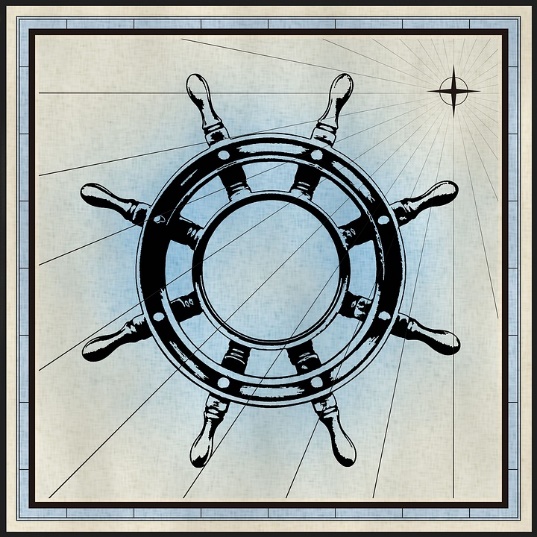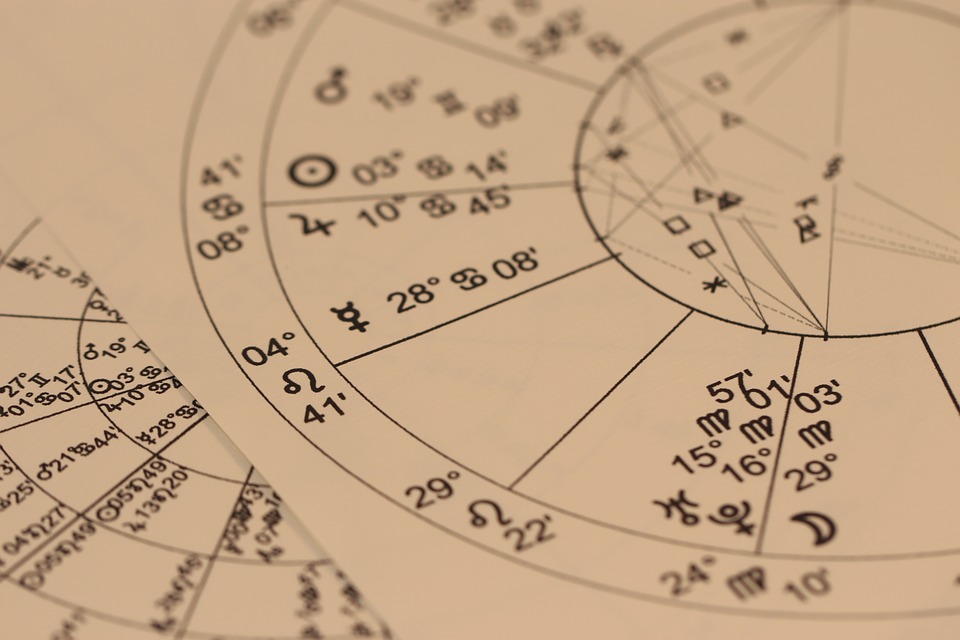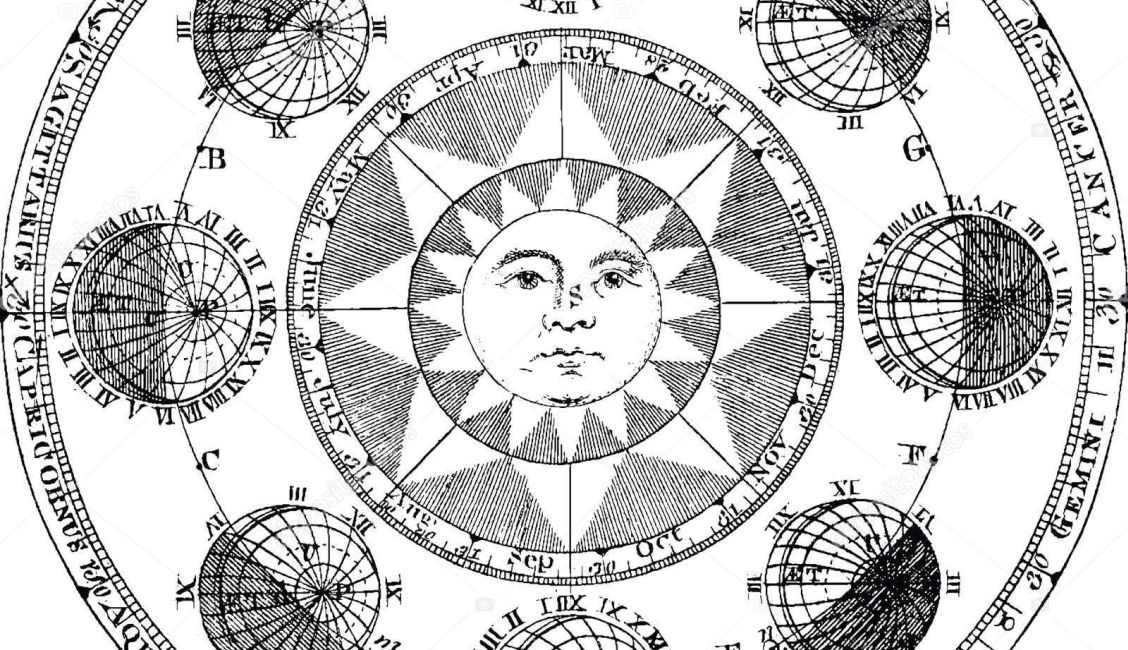by Matthew Kenney
As I wrote in my part 1 of this series, ancient astrologers designed astrology to reveal profoundly esoteric truths about your life, including your destiny, your fate.
It can even reveal the nature of the spirits and daimonic beings with whom you have a relationship on the other side.
It utilizes a complex nautical metaphor to assign guardian and tutelary roles to the different planets.
And by identifying which planets occupy which roles in our charts, we become aware of our special, unique relationship to each planet.
In the last post, I described two of the planetary roles: the ship-owner and the captain. In this post, I will outline another two: the helmsman, the look-out.
In part 3, I will discuss the final officer (the sail-master) and conclude the series by tying it all together.
The Helmsman
Though the helmsman may not be the highest-ranking officer on the ship, this planet surpasses the others in terms of importance and concrete applicability to your life.
(Note: I am using helmsman in a gender-neutral sense, since “helmsperson” sounds clunky. The original Greek kubernētēs could be applied to a man or a woman.)
The helmsman steers the ship of your life. This planet actually enacts and carries out the desires and intentions of the other officers.
The ship-owner gives the ship of your life a purpose and a destiny. The Captain oversees that destiny and carries it through.
The helmsman actually obeys those commands and carries them out himself.
You can quite easily find out your own helmsman: whatever planet rules the sign on the ascendant becomes the helmsman.
If you have Gemini rising, Mercury becomes the helmsman, if Pisces, Jupiter, and so on.
The ruler of the first house is special in this way because the first house is the only house that represents “you” in the broadest sense of the word: your personality, your ego, your body, and your health all fall under the significations of the first house.
And since the ruler of any house takes on the significations of the house it rules, the ruler of the first becomes associated with all these things as a result.
In assessing the condition of your own helmsman, you must first determine whether this planet occupies a sign configured to the ascendant by a whole-sign classical aspect.
For instance, the 3rd aspects the 1st house by sextile, the 4th by square, the 5th by trine, the 7th by opposition, and so on.
Four houses do not do this: the 2nd, 6th, 8th, and the 12th. A planet in one of these houses could not “see” the ascendant.
This draws on a complex metaphor of aspects in Greek astrology as planets seeing and conversing with each other.
These houses were classically considered “bad” or “difficult” places.
If the helmsman cannot “see” the ascendant, then the helmsman cannot get to the steering wheel in order to control it.

Sometimes natives with this placement may find themselves either metaphorically or literally “shipwrecked” – they very suddenly completely lose control of life and find themselves swept along by forces or events they cannot overcome.
Additionally, we want to identify if the helmsman is configured by classical whole-sign aspect to the ship-owner and the captain.
If they again cannot “see” each other, issues of communicating the soul’s purpose can result – these natives may feel unclear about direction and purpose.
If they aspect each other, we want to take note of what kind of aspect.
If harmonious, the aspect indicates a general openness towards one’s destiny, if difficult, then the native may feel forced into situations that do not cohere with one’s truest desires.
If you identify difficult placements like these in your own chart, you can always engage in planetary remediation to alleviate any difficult.
I have seen many of my own clients positively change their outer circumstances by working magically with spirits from this planet.
Besides this planet’s house position and its relation to the captain and the owner, you can also assess its sign placement and any aspects it makes to other planets.
Through meditation and observation these features will reveal a lot about your life and even your core personality traits.
Sometimes the same planet occupies the role of helmsman and the ship-owner or the captain.
In this case, more harmony exists for enacting one’s will and achieving one’s destiny.
Classical astrologers also considered this to be an indicator of eminence.
The Look-out
The Lookout (sometimes called the 2nd officer) operates as the officer on the prow of the ship, tasked with identifying upcoming events and scenarios in the native’s life.
Many hindrances and dangers can sink a ship: storms, strong currents, debris, reefs, etc.
The lookout is tasked with noticing where the ship is going and informing the other officers of how to respond.
The planet who rules the lot of fortune occupies the position of the lookout.
This makes sense, since the lot of fortune was associated with those things outside of us over which we have no conscious control.
You can use a free site like astro.com to identify the location of the lot of fortune in your chart, and then just determine the ruler of the sign it occupies to discover your personal look-out.
Just as for the helmsman, the ancient astrologers set forth special criteria and markers for assessing the strength of the look-out.

We first want to see whether the lookout is configured to the lot of fortune by a whole-sign classical aspect like a trine, sextile, etc. The nature of the aspect is less important.
If the lookout can “see” the lot of fortune, then the native was said to have pronoia or foresight.
These natives – oftentimes unconsciously – find themselves prepared for difficult situations before they arise. They are not easily taken off guard, and generally land on their feet.
But if the look-out cannot see fortune, then this planet cannot forewarn the other officers if difficulties are coming.
Natives with the configuration may also find themselves shipwrecked or taken by surprise.
We also want the lookout to be configured to the helmsman by a whole-sign aspect.
If they can see each other, then the 2nd officer can tell the first officer what is approaching the ship and how to navigate properly.
If the same planet that occupies one of the previous roles also occupies this one, all the better.
But if they do not see each other, then the ship of your life may still hit severe obstacles, though shipwreck is less likely.
Besides these conditions, we can again assess the strength of the look-out by identifying any essential dignity, its house placement, and any aspects it makes to other planets.
Again, do not worry if you see one of these difficult placements in your chart: you can always begin practices of remediations to strengthen these planets and adjust your celestial apportionment.
Take this is an opportunity to identify and adjust negative patterns.
Summary
So far we have discussed four of the five officers: let’s do a little review.
The Ship-owner gives the ship a destiny. It’s like the sun – it provides the life force, initial momentum and reason for the voyage. The ship-owner gives a specific purpose like “we will go to Spain to pick up spices and trade them elsewhere.”
The Captain gives the commands and agenda to see that destiny out. the captain will decide what route they take, when they will stop to refill supplies, etc. This makes the captain like the moon – it provides the support structure to see that the will of the sun is carried through.
The Helmsman takes the commands of the captain and actually sees them through at the most mundane level. If the captain tells the crew to sail to the closest port, the helmsman will physically steer the ship into the port.
The Lookout informs the other planets of what is up ahead. This planet provides warnings and instructions – especially to the helmsman – for how to properly sail the ship.
By now, the picture of your life as a ship is starting to become much fuller.
Take some time to closely examine these planets and their interactions with each other. A great deal will reveal itself to you about your chart and your life so far.
As always, you can use remediation to help difficult planetary placements.
IN CONCLUSION
If this essay resonates with you, please join our WITCH email list by using the forms on this website so we can stay in touch.
About the Author:
 Matthew Kenney has studied classical astrology for six years. Formally educated in philosophy, Ancient Greek, and Sanskrit, Matthew has devoted his mind to the investigation of ancient spiritual practices, in particular astrology and the hermetic tradition. Utilizing his passion for ancient philosophy, languages, and spirituality, he strives to enliven the astrological wisdom of the ancient for our modern day. You can learn more at ancientastrology.org, where he provides coaching to online entrepreneurs and business owners, in addition to offering free articles and astrological forecasts.
Matthew Kenney has studied classical astrology for six years. Formally educated in philosophy, Ancient Greek, and Sanskrit, Matthew has devoted his mind to the investigation of ancient spiritual practices, in particular astrology and the hermetic tradition. Utilizing his passion for ancient philosophy, languages, and spirituality, he strives to enliven the astrological wisdom of the ancient for our modern day. You can learn more at ancientastrology.org, where he provides coaching to online entrepreneurs and business owners, in addition to offering free articles and astrological forecasts.
featured image source







